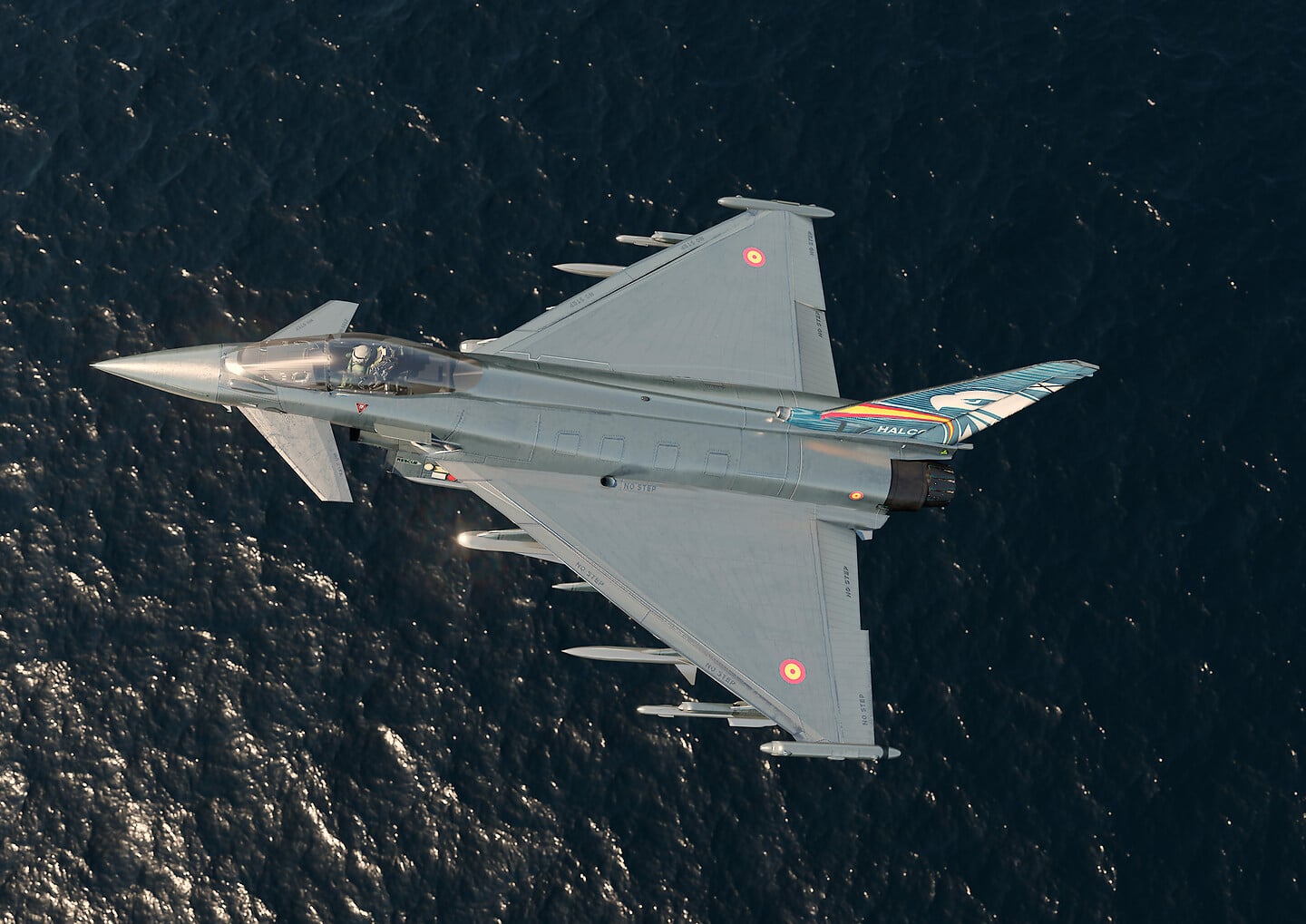Aerospace
Spain orders 20 Eurofighter jets.

Spain orders 20 Eurofighter jets in an iconic contract to modernise its combat aircraft fleet.
The NATO Eurofighter and Tornado Management Agency (NETMA) has signed a landmark contract to acquire 20 Eurofighter jets of the latest generation. The order, known as the Halcon programme, will cover the delivery of a fleet of E-Scan (Electronically Scanned) radar equipped fighter aircraft consisting of 16 single-seaters and 4 twin-seaters to replace the Spanish Air Force’s F-18 fleet on the Canary Islands.
This contract will increase the Spanish Eurofighter fleet to 90 aircraft. With the first delivery scheduled for 2026, these new aircraft will provide the Spanish Air Force fighter fleet with the most modern fighter jet developed in Europe, while also securing industrial activity until 2030.
This new order demonstrates Spain’s dedication not only to the Eurofighter, but also to its development and industrial environment. “I’d like to thank the customer for its firm stance on European defence at a critical juncture,” said Mike Schoellhorn, CEO of Airbus Defence and Space.
The € 2.043 billion acquisition was approved by Spain’s Council of Ministers on December 14, 2021, and includes the aircraft, engines, a simulator, and the necessary support services.
The Spanish Eurofighter is assembled, tested and delivered at the Airbus Getafe site (Spain) and its industrial footprint translates into more than 20,000 direct and indirect jobs in Spain alone. The main national defence and technological companies are involved in the manufacturing process. Airbus has also been working at Getafe in coordination with the Armament and Experimental Logistics Centre (CLAEX) of the Spanish Air Force to make various modifications such as the implementation of the new CM02+ software package for the Tranche 1 Eurofighters. A major tactical improvement offered by this software is the new capacity for automatic targeting of air-to-surface weapons following integration of the Litening-III targeting pod. Further air-to-air and air-to-surface capabilities have also been introduced, along with improvements to the communications systems.
Qantas and Airbus Partnership for the biofuel industry.(Opens in a new browser tab)
Eurofighter is Europe’s largest defence programme, with the four core nations of the United Kingdom, Spain, Germany, and Italy involving. It secures more than 100,000 jobs in Europe in addition to its technological capabilities. To date, the Eurofighter programme has received 681 aircraft orders from countries all over the world.

Aerospace
Boeing Transfers Rocket Stage to NASA, Paving Way for Human Moon Mission

Boeing has achieved a significant milestone by providing NASA with the second core stage of the Space Launch System (SLS) rocket.
This crucial component, crafted at NASA’s Michoud Assembly Facility (MAF), is set to propel the Artemis II crew into lunar orbit, marking humanity’s return to deep space after a 50-year hiatus.
The monumental Boeing-built rocket stage, the largest element of the Artemis II mission, will embark on a journey aboard the Pegasus barge, traveling 900 miles to NASA’s Kennedy Space Center.
Comparison of two legendary aircraft B777x vs B747 aircraft:Click here
Upon arrival, it will be meticulously integrated with other essential Artemis II components, including the upper stage, solid rocket boosters, and NASA’s Orion spacecraft within the iconic Vehicle Assembly Building. This intricate integration process is a vital step toward the eagerly anticipated Artemis II launch, slated for 2025.
“Boeing-built products helped land humankind on the moon in 1969, and we’re proud to continue that legacy through the Artemis generation,” remarked Dave Dutcher, vice president and program manager for Boeing’s SLS program. “Together, with NASA and our industry partners and suppliers, we are building the world’s most capable rocket and paving the way to deep space through America’s rocket factory in New Orleans.”
NASA, Lockheed Martin Reveal X-59 Quiet Supersonic Aircraft:Click here
The delivery of Core Stage 2 marks a significant achievement in the evolution of the SLS rocket. Towering over 200 feet and powered by four RS-25 engines, this core stage, coupled with two solid-fueled booster rockets, will generate a staggering 8.8 million pounds of thrust. This immense power is crucial to launching Artemis II and future missions into the vast expanse of space.
The SLS rocket stands unparalleled in its capability to transport both crew and substantial cargo to the moon and beyond in a single launch. Its extraordinary capacity will facilitate the delivery of human-rated spacecraft, habitats, and scientific missions to destinations including the moon and Mars, ushering in a new era of space exploration.
-

 Travel1 week ago
Travel1 week agoAir India to Expand US Operations with Three New Routes After a Decade
-

 Travel2 weeks ago
Travel2 weeks agoWhy We Should Avoid These Stamps in a Passport
-

 Airlines1 month ago
Airlines1 month agoInvestigations Reveal Fake Chinese Titanium in Boeing and Airbus Jets
-

 Tech4 weeks ago
Tech4 weeks agoChina’s CATL Plans 1,800-Mile Electric Plane Launch by 2027
-

 Airport3 days ago
Airport3 days agoTop 10 Largest Airports in the World by Size
-

 Aerospace4 weeks ago
Aerospace4 weeks agoChina’s Fighter Jets Turn Wings into Autonomous Drones
-

 Airlines4 days ago
Airlines4 days agoAir India Rolls Out A350s for Delhi-New York JFK and Newark Routes
-

 Defence3 weeks ago
Defence3 weeks agoBoeing Enhances Chinook with New Engines and Block II Upgrades at $96 Million







